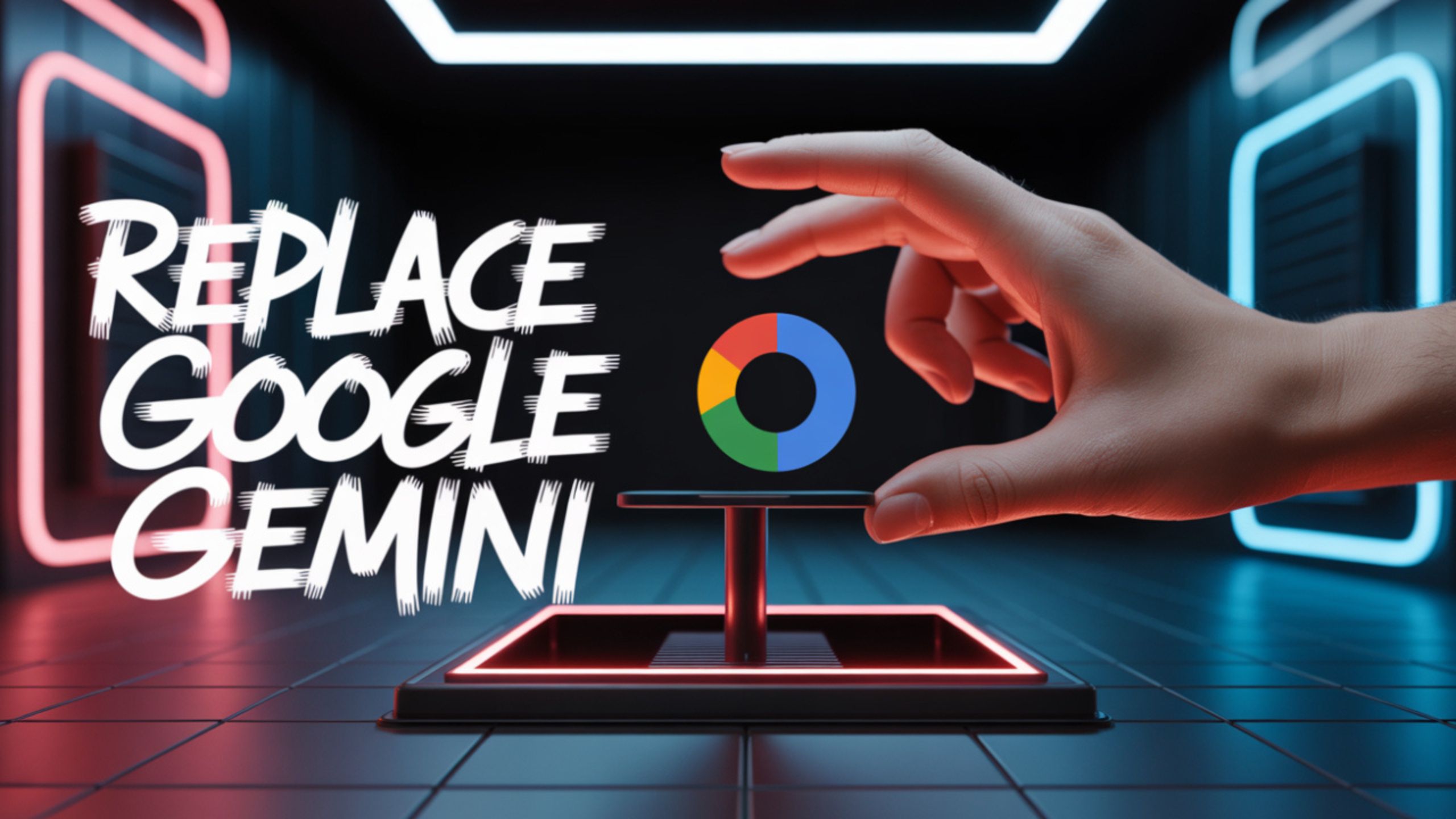In the ever-evolving world of mobile AI assistants, Google Gemini has made its presence felt by integrating deeply into Android devices. While it has powerful AI features, some users prefer ChatGPT by OpenAI for its more conversational, creative, and flexible capabilities. You’re in the right place if you’re among the users who want to disable or remove Google Gemini, install ChatGPT, and make it your go-to AI assistant. This guide will walk you through detailed step-by-step instructions, including bonus tips on removing Gemini suggestions from Gboard and using ChatGPT via voice or browser.

Why Would You Want to Remove Google Gemini?
While Google Gemini (formerly known as Google Assistant or Bard in some iterations) is a capable AI, there are several reasons why users might prefer switching to ChatGPT:
- ChatGPT’s conversations feel more natural and human-like.
- ChatGPT provides better creative writing, brainstorming, and problem-solving abilities.
- You might feel more comfortable with OpenAI’s privacy and data handling practices.
- ChatGPT’s official app now supports voice conversations and shortcuts.
Let’s dive into the step-by-step process to make ChatGPT your AI buddy.
1. Disable or Remove Google Gemini (Optional But Recommended)
Option 1: Disable Google Gemini App
If Gemini came pre-installed on your device as a system app, you might not be able to uninstall it, but you can disable it.
Steps:
- Long-press the Gemini app icon on your home screen or app drawer.
- Tap on “App Info.”
- Choose “Disable.”
- If it’s a system app, you might see an option like “Uninstall updates” instead of a direct uninstall. Select it to roll back Gemini to its factory version, effectively turning off new features.
Option 2: Remove Gemini Shortcuts
Even if you can’t uninstall Gemini, you can remove its visibility.
Steps:
- Remove any Gemini shortcuts from your home screen.
- Delete Gemini from your dock or main navigation areas.
2. Install the ChatGPT Official App in the Play Store(by OpenAI)
OpenAI has officially launched the ChatGPT app for Android, the easiest way to use ChatGPT on your phone.
Steps:
- Open the Google Play Store.
- Search for “ChatGPT” (by OpenAI).
- Tap “Install.”
- Once installed, log in with your OpenAI account credentials.
Congratulations, ChatGPT is now installed on your device!
3. Set ChatGPT Shortcut on the Home Screen
You can place ChatGPT on your home screen or dock for quick access.
Steps:
- Long-press the ChatGPT app icon from your app drawer.
- Drag it to your preferred spot on the home screen or dock.
Now, ChatGPT is always within reach and ready to assist you.
4. Enable Voice Input in ChatGPT (Optional but Highly Recommended)
Did you know you can talk to ChatGPT using your voice? The official app now supports voice conversations.
Steps:
- Open the ChatGPT app.
- Tap on the headphone icon located in the bottom right corner.
- Start speaking, and ChatGPT will respond via text or voice, depending on your settings.
This brings an experience similar to that of voice assistants like Gemini or Alexa, but with ChatGPT’s signature conversational style.
5. Use ChatGPT as Your Main AI Assistant (Via Voice Assistants Workaround)
Unfortunately, Android doesn’t allow you to set ChatGPT as the default voice assistant. However, there are clever workarounds.
Option 1: Use Third-Party Voice Assistant Apps
- Search and install apps like “ChatGPT Voice Assistant” from the Play Store.
- These apps allow you to invoke ChatGPT using a voice command or widget.
Option 2: Use Quick Access Widgets or Buttons
- Long-press your home screen.
- Add a ChatGPT shortcut or widget.
- Please place it prominently for easy activation.
While it’s not fully replacing Gemini at the OS level, this method makes ChatGPT almost as accessible.
6. Remove Gemini Suggestions from Gboard (Optional)
Many Android users find Gemini-powered suggestions in Gboard intrusive. Here’s how to disable them.
Steps:
- Open Gboard Settings (long-press the comma or globe icon on your keyboard).
- Go to “Suggestions.”
- Disable “Contextual Suggestions.”
- This will stop Gboard from showing Gemini-related prompts or suggestions while typing.
Bonus Tip: Use ChatGPT Inside Mobile Browsers
If you prefer not to install the app or want an alternative, use ChatGPT in your mobile browser.
Steps:
- Open your preferred browser (Chrome, Edge, Firefox, etc.).
- Navigate to https://chat.openai.com.
- Log in to your OpenAI account.
- Tap the three-dot menu in your browser and select “Add to Home Screen.”
Now you have ChatGPT as a web app shortcut, functioning almost like the native app.
Extra Pro Tip: Create a Full ChatGPT-Centric Experience on Android
For those who want a Gemini-free, ChatGPT-first experience, combine these steps:
- Disable or hide Gemini.
- Use the ChatGPT app with voice-enabled.
- Add a ChatGPT shortcut to your dock.
- Remove Gemini suggestions from Gboard.
- Set up ChatGPT Voice Assistant apps.
- Use ChatGPT in your browser as a backup.
This ensures ChatGPT becomes the heart of your AI interactions on Android, both visually and functionally.
Wrap Up
Switching from Google Gemini to ChatGPT might seem like a small tweak, but it’s a game-changer for users who value ChatGPT’s conversational tone, creativity, and reliability. While Android does not allow full replacement of the default assistant, the above steps help you minimize Gemini’s presence and maximize your ChatGPT experience.
Following this comprehensive guide, you can enjoy ChatGPT as your primary AI companion for text, voice, and even browser-based interactions, making your phone feel more personalized, creative, and aligned with your preferences.
Remember, the AI you use daily should make your life easier and more enjoyable, and with these steps, ChatGPT can now take that central role on your Android device.
Ask Follow-up Question from this topic With Google Gemini: How to Replace Google Gemini with ChatGPT in Android: Easy Step-by-Step Guide

Selva Ganesh is the Chief Editor of this blog. A Computer Science Engineer by qualification, he is an experienced Android Developer and a professional blogger with over 10 years of industry expertise. He has completed multiple courses under the Google News Initiative, further strengthening his skills in digital journalism and content accuracy. Selva also runs Android Infotech, a widely recognized platform known for providing in-depth, solution-oriented articles that help users around the globe resolve their Android-related issues.




Worked perfectly on my Pixel. Thanks for the step-by-step.
Even a tech newbie like me could follow this. Thanks!
My favorite tutorial so far. Got it running in minutes.
Finally replaced Gemini with ChatGPT and it’s working flawlessly.
Switched today using your steps—everything’s perfect.
I had no idea it was this simple to make the switch. Thanks!
Gemini was laggy, but ChatGPT is smooth—great guide.
This guide made switching from Gemini so easy! Appreciate the clarity.
Great alternative to Gemini, and your guide was top-notch.
This was so clear and straightforward, great work!
Awesome walkthrough, now using ChatGPT on my Android daily.
I’ve been wanting to try ChatGPT instead—this helped a lot.
Easy to follow and it worked on the first try!
Very helpful instructions, ChatGPT feels more responsive now.
I wasn’t sure how to do it, but this made it effortless.